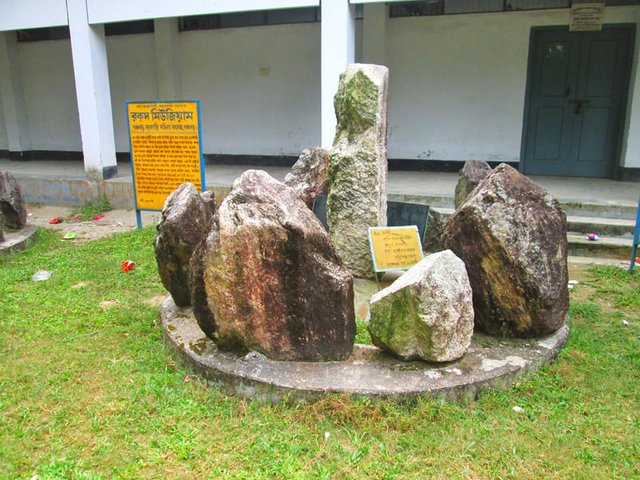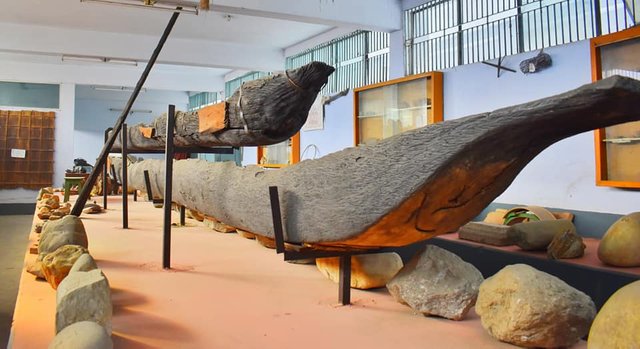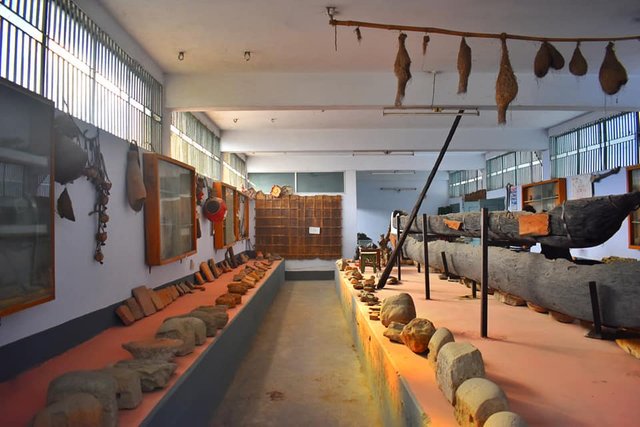
The Stone Museum is also in Bangladesh again. The first day I heard about the Rocks Museum, I was very surprised. The Rocks Museum is located at the Government Women's College, Panchagarh. In 1997, the then principal of the college Dr. to determine the age of the territory of the region, land-characteristics, collection of ethnographic patterns and research. Nazmul Haque Sir established the museum on his own initiative.
This time on the way back from India, I entered Bangladesh through Banglabandha port in the morning, as a result of which I reached Panchagarh city by 12 noon. The bus to Dhaka was very busy at 7 pm that evening. Let's take this opportunity to visit Panchagarh city.

The excavation of soil in Panchagarh district is like a stone fence and the collection of stones from the river Mahananda. From Panchagarh to Kanchenjunga philosophy, we all know more or less about these things. But you know what? This is probably the oldest soil in the country.
In 2015, I visited Panchagarh in 64 districts and came to see the only Rocks Museum in the country. The museum is located inside the Government Women's College. I could not enter the museum as the college was closed for 7 days. So this is not the first time I have decided to visit the Rocks Museum.
I took a rickshaw a short distance from Zero Point in the city to the Government Women's College. Upon entering the college, the doorman informed that one cannot enter the museum. The museum is closed because the exams are going on in the college. Alas, but the only rock museum in the country will not be seen this time.
I went straight to the college principal's room. I request Sir to introduce himself as a traveler and make arrangements to visit the museum. Sir talked to us for a while and sent us to the college office and asked the office to guide us in a good way about the museum.
Two storey white building. Academic class room upstairs, museum downstairs. In front of the building there are some big stones and a yellow signboard next to it. As soon as I looked at the information on the signboard, I realized that I was standing on the most burnt ground in the country. I keep reading the unknown history with fascination ... About 70 million years ago, the Panchagarh region was a wide shallow sea called 'Tethis' in the Himalayas. From both sides of this sea, two continents or plates called 'Gondwana' and 'Lorecia' keep coming towards each other. The present Himalayas rose in the Miocene period about 20 million years ago from the sediments deposited in the Tethys Sea under intense pressure on both sides. The sea 'Tethys' is lost forever. The Panchagarh region was part of the Himalayan sub-frontal cavity. The interior of Panchagarh also contains tertiary rock formations (approximately 16 million years ago) and pre-Camrian (approximately 10 million 26 million years ago) rock formations. This foundation rock has a minimum layer of about 130 m thick palolic rock which is quite high in Panchagarh area and gradually slopes to the south. Pre-Camria developed plains have been classified as Ruhia side country, Rangpur, Saddle etc. Panchagarh is located in the foothills. The age of the silt of this terrain is approximately 10 to 20 thousand years.
As soon as we entered the museum, we first saw two ancient boats. Two huge boats have been made by cutting willow trees one by one. The first is the ethnographic dinghy. The 300- to 1,000-year-old dinghy was rescued by digging the "Chawai" river in Panchagarh district. The other is about 200 to 300 years old. It was rescued by digging the "Karatoya" river.

The museum also has sedimentary gravel and gravel stones of different shapes, colors, silica gravel and silica sand, yellow and dark yellow sand, mineral sand, white clay, undulating flat stone, limestone, silt and pottery, hard rock, and Panchagarh tribal utensils. Fossil wood found under the river and underground, brick-and-stone statues of buildings three to two thousand years old, huge sandstones, granite stones, Oyarjahita, basalt, shale, marble rocks of different names and colors, silikayita wood or stone from the plant, designed and decorated arches of different lines, text, and an image of the rock and mud, gray and black color.
There is a museum and I came out and saw a tea garden in the pond. Today, the tea garden that you see in Panchagarh district, but this is the beginning. Nazmul Haque Sir. He brought tea saplings from India and built a small tea garden on the bank of the pond at the foundation of the college. This is the first tea garden in Panchagarh district. Some initiatives of people like Nazmul Haque Sir became invaluable resources of history and created new horizons of economy.
Since it is a college so maintain silence and enter the museum with the permission of the college authorities.
post source : https://web.facebook.com/groups/mail.tob/permalink/10156000330411790/
Panchagarh 23.2.19
Hi! Did you know that steemit.com is now censoring users and posts based on their opinions?
All the posts of these users are gone!
https://github.com/steemit/condenser/commit/3394af78127bdd8d037c2d49983b7b9491397296
Here's a list of some banned users:
'roelandp', 'blocktrades', 'anyx', 'ausbitbank', 'gtg', 'themarkymark', 'lukestokes.mhth', 'netuoso', 'innerhive'See anyone you recognize? There could be more, they also have a remote IP ban list.
Will you be censored next?
Downvoting a post can decrease pending rewards and make it less visible. Common reasons:
Submit